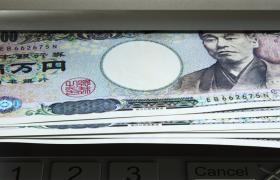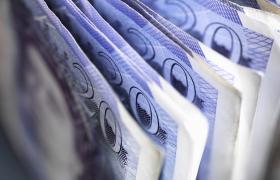Quick Contact

29th November 2018
Overnight the AUD made significant gains of almost a cent against the USD.
The USD fell after the Chair of the USA’s Federal Open Market Committee (Fed) Jay Powell spoke at the Economic Club of New York and said that US interest rates are “just below the broad range of estimates of the level that would be neutral for the economy”.
This statement saw the AUD rise from 0.7026 to around 0.7109 - a difference of about $16 (or a few souvenirs) if you were exchanging $2000AUD to USD. If you had purchased your cash yesterday, you’d be cursing your luck, but not if you had added Rate Guard to your in store transaction with Travel Money Oz. Its free to add, and should the rate improve within 14 days (like it did overnight) we would refund you the difference.
The notion of a ‘neutral’ interest rate figure seems to be a moving target at the moment. In October, Powell said the US economy was a “long way from neutral”, compared to last night’s “just below neutral”.
What would this ideal ‘neutral’ figure look like in terms of interest rates? At the moment, interest rates in the US stand around 2.00% - 2.25%. Considering Powell said they are just below a broad range of estimates of what neutral would look like, just below could be considered one interest rate hike which would equate to 2.25% - 2.50%. If we consider this to be the bottom of the range, and use 1% to account for a broader range, a neutral level may be anywhere between 2.50% and 3.50%.
With this in mind, the final level will depend greatly on future economic releases. For the time being, though, the market has interpreted this information to mean the Fed will potentially not only slow the amount of interest rate hikes, but also the pace of interest rate hikes.
Yeah cool, thanks for the info. What does that mean for Aussie travellers?
The value of the Aussie dollar is influenced by many variables. Interest rates are a key factor in determining its value against other currencies, especially the USD. The countries with higher interest rates, or an expectation of rate hikes, provide greater returns on investments. Greater return = more people investing in the currency. Greater demand for currency = higher value.
Therefore, a lower chance of rate hikes in the US is good news for the AUD (as we saw last night). Just keep in mind that other factors, such as the current trade war between China and the US, will still have an effect on the value of the AUD.
Brexit News
Overnight also saw the UK Treasury and Bank of England (BoE) provide risk assessments of potential Brexit scenarios.
The Treasury forecast that a ‘no-deal’ scenario would lead to a 9.3% hit to UK Gross Domestic Product (GDP) over 15 years. The BoE forecast the same scenario would lead to a 25% fall in GDP, thus resulting in a need for the Bank to increase interest rates to 5.5% to control inflation.
The Treasury didn’t forecast the recently agreed deal with the EU, however, a close variant was modelled. The model showed a 3.9% decrease in GDP over 15 years. Whilst this is definitely better than the consequences of a ‘no deal’, both institutions agree that the UK will be poorer economically under any form of Brexit situation, compared to just staying in the EU.
In addition to this, talk of a second referendum is continuing to grow. It will be interesting to see what happens in the coming weeks as Prime Minister Theresa May continues to rally MPs for support of the current agreement. Should May not gain enough support during the vote on 11 December, the UK will need to return to the drawing board and face the reality of a ‘no-deal’ scenario.
Therisk assessment scenarios did not have a major impact on the pound against the AUD; even so, the market will remain extremely cautious as we move through the next few weeks.
We recommend signing up for Rate Alerts. That way we’ll let you know if the Aussie dollar reaches your desired rate against the pound, Euro or your currency of choice.
Definitions for those of us playing at home
Federal Open Market Committee (Fed)
The FOMC is the Federal Open Market Committee. A 12 person body that focuses on monetary policy in the United States.
Neutral Economy
A neutral economy, or neutral monetary policy is one that neither stimulates or restrains economic growth. Think of it like the economy being on cruise control - not speeding up or slowing down.
It happens when economic conditions are ‘just right’ and interest rates do not need to be lowered to be ‘accommodative’, nor are they too high to put a strain on economic activity. A neutral rate coincides with full employment, positive trend growth and stable prices.
This blog is provided for information only and does not take into consideration your objectives, financial situation or needs. You should consider whether the information and suggestions contained in any blog entry are appropriate for you, having regard to your own objectives, financial situation and needs. While we take reasonable care in providing the blog, we give no warranties or representations that it is complete or accurate, or is appropriate for you. We are not liable for any loss caused, whether due to negligence or otherwise, arising from use of, or reliance on, the information and/or suggestions contained in this blog.
All rates are quoted from the Travel Money Oz website, and are valid as of 29 November 2018.
*Terms and conditions apply to Rate Guard. See https://www.travelmoneyoz.com/rate-guard for more information.
All rates are quoted from the Travel Money Oz website, and are valid as of 29 November 2018.
*Terms and conditions apply to Rate Guard. See https://www.travelmoneyoz.com/rate-guard for more information.












